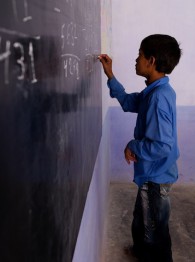
About the Project
This project is one of the 2015 WISE Awards finalists.
The Inter-Agency Network for Education in Emergencies is a global network that works to ensure all people the right to quality, safe and relevant education in emergency situations including contexts of violence, adversity, conflicts and natural disasters. The network is a global advocate on Education in Emergencies, credited by its members and peers for its work to establish and strengthen the field of Education in Emergencies and to secure the global recognition of education as a key component of humanitarian aid. The network works through the active engagement and participation of more than 11,000 members including students, teachers, practitioners, policy-makers, and researchers across 170 countries.
Context and Issue
Solution and Impact
To address the lack of consistency in the provision of education in crisis settings, INEE facilitated a highly participatory, consultative process of local, national and regional consultations, engaging over 3,300 representatives (including national authorities, practitioners, policy-makers, academics and education stakeholders) in the development and update of the INEE Minimum Standards for Education. The focus of the INEE Minimum Standards is to ensure quality, coordinated humanitarian response that meets the educational rights and needs of people affected by emergencies through processes that assert their dignity.
The Standards aim to enhance the quality of educational preparedness, response and recovery, increase access to safe and relevant learning opportunities and ensure accountability in providing these services.
Since its inception in Dakar at the 2000 World Education Forum, INEE has transformed the design and delivery of education in humanitarian contexts. The organization is largely credited for the establishment and significant growth of the Education in Emergencies field itself. By creating the INEE Minimum Standards, the foundational tool for the EiE field, INEE has provided educationalists a common language and framework for the design and delivery of EiE policy and practice. Secondly, INEE has built a strong, diverse and global community of practice. Thirdly, INEE has significantly influenced and redefined the humanitarian aid agenda through its global advocacy work, securing the recognition of education as a crucial component of humanitarian response.
The organization’s indirect beneficiaries include children, youth, and their communities affected by crises. Direct beneficiaries include those that support the right to education, such as educationalists, humanitarian workers, human rights activists, and policy makers. Since its establishment in 2000, INEE has impacted an estimated 16.5 million beneficiaries worldwide.


